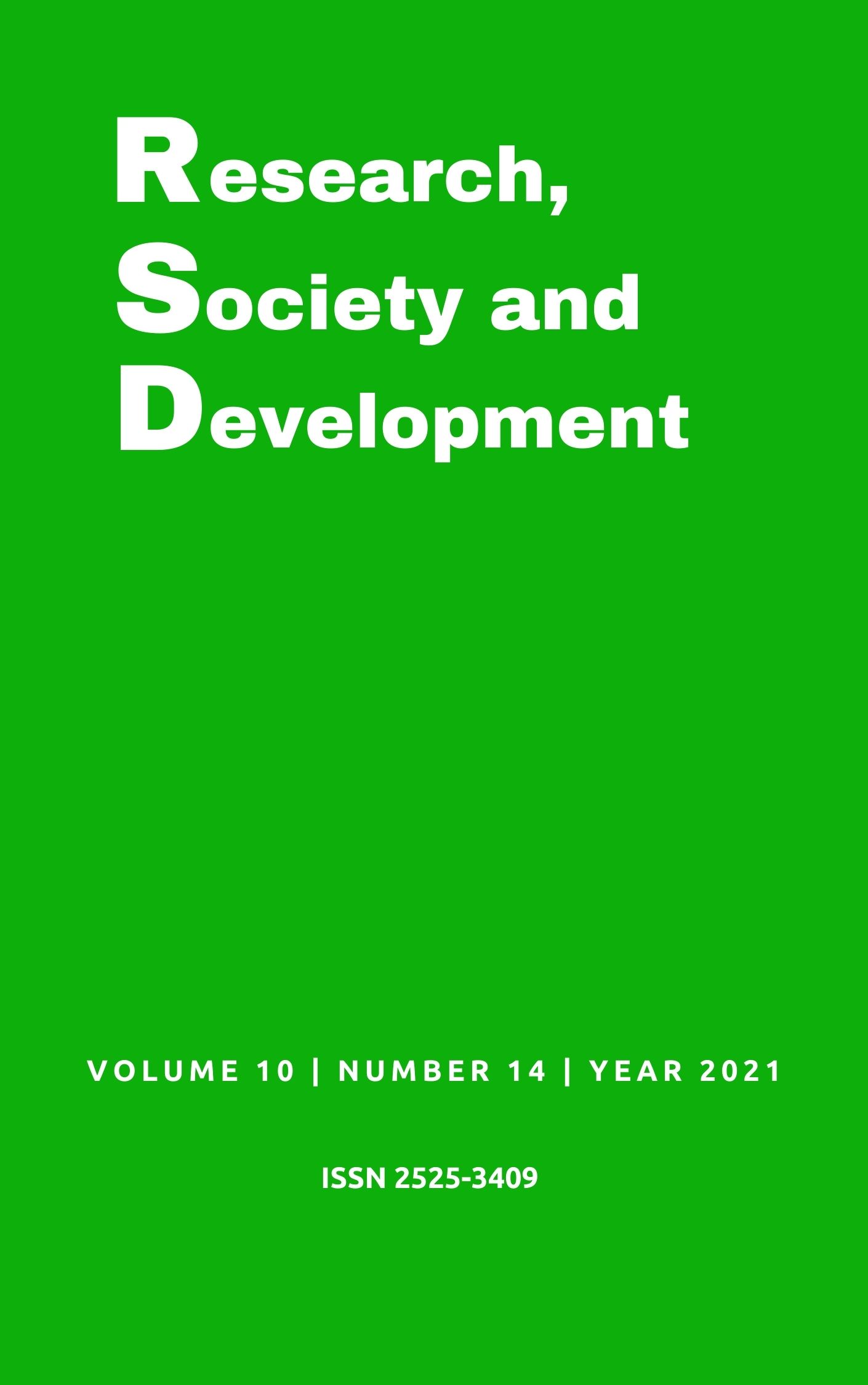Química y alimentación: una secuencia didáctica para la enseñanza de la Química utilizando los tres momentos pedagógicos para la enseñanza de funciones inorgánicas
DOI:
https://doi.org/10.33448/rsd-v10i14.21914Palabras clave:
Funciones inorgánicas, Tres momentos pedagógicos, Alimentación.Resumen
Los tres momentos pedagógicos son una metodología que busca incrementar el interés y fomentar el aprendizaje de los estudiantes, utilizando temas presentes en su vida diaria. Así, el presente trabajo tiene como objetivo desarrollar y aplicar una secuencia didáctica a partir de los tres momentos pedagógicos. Así, la secuencia se desarrolló para las clases de primer año de jóvenes y adultos utilizando el tema "Química y Alimentación", en el primer momento pedagógico se llevó a los estudiantes la etapa inicial de problematización con preguntas problematizadoras para relevar conocimientos previos. Inmediatamente después, en el segundo momento pedagógico de aporte del marco, aplicación, textos de apoyo y preguntas, se planteó el contenido de las funciones inorgánicas, siempre vinculando al tema generador. Finalmente, en el último momento pedagógico se utilizó un juego y una pregunta para extrapolar el contenido. La secuencia didáctica resultó ser una herramienta didáctica importante, ya que luego del análisis de los resultados, los estudiantes tuvieron un aprendizaje efectivo al final. Esta herramienta didáctica también promueve el debate dentro del aula, haciendo que los estudiantes se conviertan en más ciudadanos, críticos y activos en la mundo en el que viven.
Referencias
Bardin, L. (2011). Análise de conteúdo 4ªed. Lisboa: Edições, 70, 99-120.
Bruning, V., & Sá, M. Z. (2013). Uma Abordagem sobre Ácidos e Bases no Cotidiano: Trabalhando com Atividades Experimentais Investigativas na Educação Básica. Os desafios da escola pública paranaense na perspectiva do professor PDE. Secretaria da Educação: Governo do Estado do Paraná. 1-33. http://www.diaadiaeducacao.pr.gov.br/portals/cadernospde/pdebusca/producoes_pde/2013/2013_uem_qui_pdp_valiria_bruning.pdf
Campos, R. D., & Silva, R. C. (1999). Funções da química inorgânica... funcionam. Química Nova na Escola, 9, 18-22.
Castro, M. C., Siraque, M., Alves, E. S., Saqueti, B. H. F., & Ramos, L. W. C. (2021). Periodic table and the human body a didactic sequence for teaching Chemistry. Research, Society and Development, 10, e574101321591.
Cochito, M. I. S. (2004). Cooperação e aprendizagem: educação intercultural. Lisboa: Acime, 180.
Delizoicov, D. (2001). Problemas e problematizações. Ensino de Física: conteúdo, metodologia e epistemologia numa concepção integradora. Florianópolis: Ed. da UFSC, 125-150.
Delizoicov, D., Angotti, J. A., & Pernambuco, M. M. C. A. (2002). Ensino de Ciências: fundamentos e métodos. Cortez.
Freire, P. (2005). Pedagogia do oprimido. 17 ed. Rio de Janeiro: Paz e Terra.
Josso, M. C. E. D. V. (2004). Formação. Tradução José Cláudino e Júlia Ferreira.
Maldaner, O. A. (2000). A formação inicial e continuada de professores de química: professores/pesquisadores. Editora Unijuí.
Marques, S. P. D., Ávila, F. N., Dias Filho, F. A., & Silva, M. G. V. (2016). Aprendizagem cooperativa como estratégia no aprendizado de química no ensino médio. Conexões-Ciência e Tecnologia, 9, 57-66.
Melo, J. M., Silva, A. C. B. F., Francielle, M., Silva, F., & Firme, R. N. (2016). A experimentação como estratégia didática para favorecer a aprendizagem dos alunos no Ensino das propriedades coligativas. https://www.editorarealize.com.br/index.php/artigo/visualizar/19814
Muenchen, C., & Delizoicov, D. (2014). Os três momentos pedagógicos e o contexto de produção do livro" Física". Ciência & Educação (Bauru), 20, 617-638.
Pereira, A. S., Shitsuka, D. M., Pereira, F. J., & Shitsuka, R. (2018). Metodologia da pesquisa científica. [eBook]. Santa Maria. Ed. UAB / NTE / UFSM. https://repositorio.ufsm.br/bitstream/handle/1/15824/Lic_Computacao_Metodologia-Pesquisa-Cientifica.pdf?sequence=1.
Pimenta, S. G., & Lima, M. S. L. (2004). Estágio: diferentes concepções. Estágio e docência. São Paulo: Cortez, 33-57.
Prado, A. P. P.; Silveira, M. P. (2014). Química dos Ácidos e Bases por meio de uma proposta problematizadora. Os desafios da escola pública paranaense na perspectiva do professor PDE. Secretaria da Educação. Governo do Estado do Paraná. 1 ed., 2, 1-37. http://www.diaadiaeducacao.pr.gov.br/portals/cadernospde/pdebusca/producoes_pde/2014/2014_uem_qui_pdp_ana_paula_pinheiro.pdf
Sá, D. M. B. (2015). Aprendizagem cooperativa. Aplicação dos métodos Jigsaw e Graffiti cooperativo com alunos do 5º ano de escolaridade (Doctoral dissertation).
Schön, D. (1992). Formar professores como profissionais reflexivos. Os professores e sua formação. Lisboa: Dom Quixote, 2, 77-91.
Silva, M. P., & Santiago, M. A. (2012). Proposta para o ensino dos conceitos de ácidos e bases: construindo conceitos através da História das Ciências combinada ao emprego de um software interativo de livre acesso. História da Ciência e Ensino: construindo interfaces, 5, 49-82.
Silva, R. M. G. D., & Schnetzler, R. P. (2008). Concepções e ações de formadores de professores de Química sobre o estágio supervisionado: propostas brasileiras e portuguesas. Química Nova , 31 , 2174-2183.
Zoch, A. N., Vanz, L., & Vendruscolo, T. (2016). Sequência Didática Envolvendo Tic’s E Experimentação Para O Ensino De Propriedades Coligativas (Crioscopia E Ebulioscopia). In: Encontro Nacional de Ensino de Química. Universidade Federal de Santa Catarina. https://www.eneq2016.ufsc.br/anais/resumos/R0216-1.pdf
Descargas
Publicado
Número
Sección
Licencia
Derechos de autor 2021 Matheus Campos Castro; Luara Wesley Candeu Ramos ; Eloize Silva Alves; Bruno Henrique Figueiredo Saqueti

Esta obra está bajo una licencia internacional Creative Commons Atribución 4.0.
Los autores que publican en esta revista concuerdan con los siguientes términos:
1) Los autores mantienen los derechos de autor y conceden a la revista el derecho de primera publicación, con el trabajo simultáneamente licenciado bajo la Licencia Creative Commons Attribution que permite el compartir el trabajo con reconocimiento de la autoría y publicación inicial en esta revista.
2) Los autores tienen autorización para asumir contratos adicionales por separado, para distribución no exclusiva de la versión del trabajo publicada en esta revista (por ejemplo, publicar en repositorio institucional o como capítulo de libro), con reconocimiento de autoría y publicación inicial en esta revista.
3) Los autores tienen permiso y son estimulados a publicar y distribuir su trabajo en línea (por ejemplo, en repositorios institucionales o en su página personal) a cualquier punto antes o durante el proceso editorial, ya que esto puede generar cambios productivos, así como aumentar el impacto y la cita del trabajo publicado.


